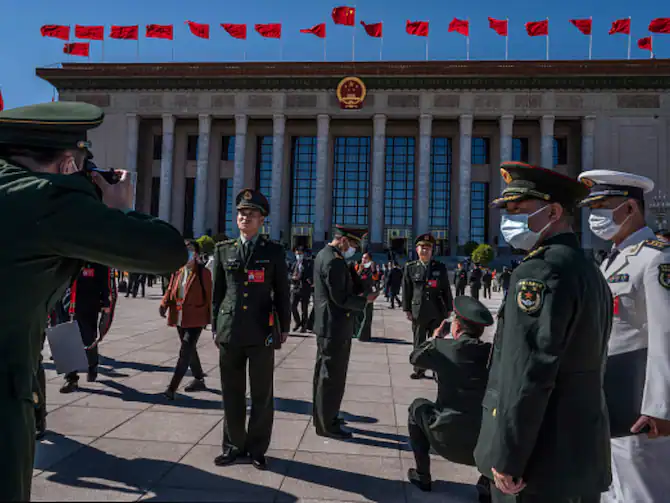China is expanding its nuclear force and is likely to have a stockpile of about 1,500 warheads by 2035, up from the current estimated number of 400, the Pentagon has said in a report that notes that Beijing aims to expand its national power through both domestic and foreign policy initiatives. In its annual report to Congress on China’s ambitious military build-up, the Pentagon said on Tuesday that over the next decade, Beijing aims to modernise, diversify, and expand its nuclear forces.

China’s current nuclear modernisation exercise has exceeded the previous modernisation attempts in both scale and complexity, it said.
China is investing in and expanding the number of its land, sea, and air-based nuclear delivery platforms and constructing the infrastructure necessary to support this major expansion of its nuclear forces, the report said.
China is also supporting this expansion by increasing its capacity to produce and separate plutonium by constructing fast breeder reactors and reprocessing facilities. In 2021, Beijing probably accelerated its nuclear expansion, it said.
The Pentagon said it estimates that China’s operational nuclear warheads stockpile has surpassed 400.
The People’s Liberation Army (PLA) plans to “basically complete modernisation” of its national defence and armed forces by 2035, said the report.
“If China continues the pace of its nuclear expansion, it will likely field a stockpile of about 1,500 warheads by its 2035 timeline,” it said.
The Chinese strategy is a determined pursuit to amass and expand its national power to transform, at least, aspects of the international system to make it more favourable to its political system and its national interests as they define them, said a senior defence official.
“They aim to expand their national power through both domestic and foreign policy initiatives. So, the global security initiative that President Xi Jinping laid out at … is one of these in which the PRC seeks to kind of paint itself as a provider of global public goods,” the official said.
There have been more coercive and aggressive actions in the Indo-Pacific region, including some of which the US would highlight as being dangerous, the official noted.
“So PLA vessels and aircraft have exhibited an increase in unsafe and unprofessional behavior in the Indo-Pacific region, including for the aircraft aerobatics, discharging chaff and other activities that could make it dangerous for nearby aircraft to maneuver safely,” the official noted.
Among other things, the report notes intensified Chinese diplomatic, economic, political and military pressure against Taiwan. The report highlights increasing military pressure through 2021 and its increase in 2022, particularly associated with US Speaker Nancy Pelosi’s visit to Taiwan.
China views Taiwan as a rebel province that should be reunified with the mainland, even by force.
The Pentagon report also offers some very important new insights into how the Chinese Army views the future of warfare. The Chinese Army refers to systems destruction warfare as the next way of war.
“They have also begun discussing a new operational concept for them, what they call a core operational concept. That is called multi-domain precision warfare,” said the official.
Last year, the Pentagon said the number of Chinese nuclear warheads could increase to 700 within six years and may top 1,000 by 2030. The new report says China currently has about 400 nuclear warheads, and that number could grow to 1,500 by 2035.
The United States, by comparison, has 3,750 active nuclear warheads.
Beijing’s growing arsenal is creating uncertainty for the US as it navigates how to deter two nuclear powers, Russia and China, simultaneously, the Pentagon said in its recent nuclear posture review.

